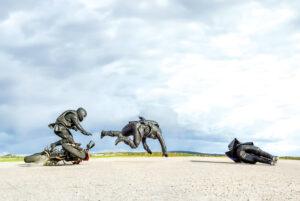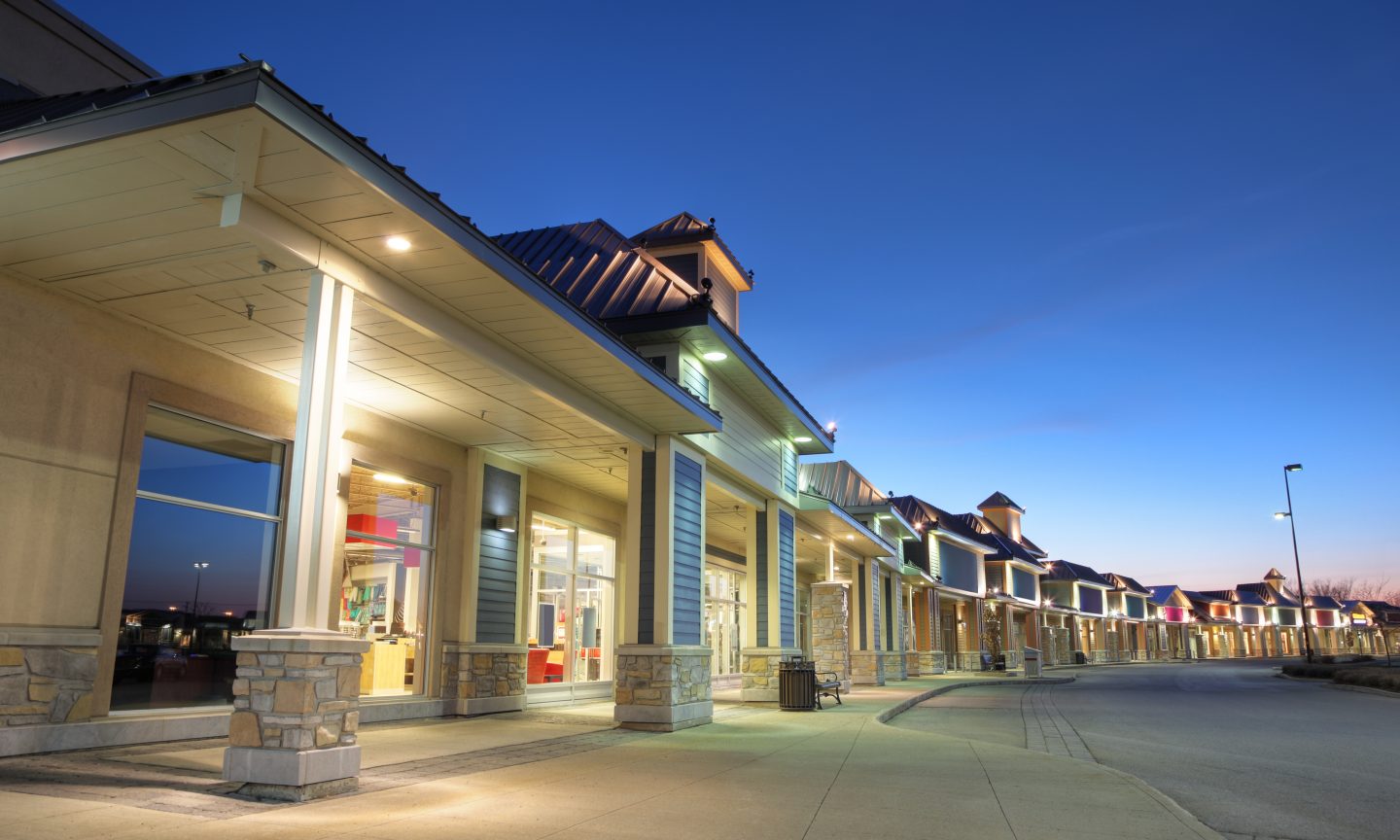Inventing a new product can change an industry—but it isn’t easy. To go from the eureka moment to a finished product available for customers takes longer and costs more than one might think. Here’s how some inventors overcame the hurdles.
B&R Innovations LLC
A couple of close calls of tents nearly collapsing inspired Nick Deninno, founder and COO of B&R Innovations LLC in Bethpage, N.Y., to invent a new way to ballast the temporary structures.
Tapping into his long experience in the tent industry, Deninno created the patented Block and Roll® Tent Ballast Solutions® system that makes ballasting tents easier and safer. The system features concrete blocks with fork pockets, allowing lightweight hand trucks or forklifts to easily move the blocks, which weigh up to 700 pounds. The blocks can be strapped together to achieve the needed ballast weight. Other accessories include ballast plates to help keep
the blocks stable and specialized carts.

Deninno says creating the new product wasn’t easy. “Boy, it took a lot of trial and error,” he says. “While I am not an engineer, I knew exactly what we needed. But still, we had to build and test it.”
Deninno revised his plans a dozen times during the patent process. “Mainly it was because they wanted better diagrams of the product and better descriptions of the product,” says Deninno, who hired an artist his patent attorney recommended to improve Deninno’s hand-done sketches.
Even if the initial sketches were not as precise as was needed, he says it was important to start the process, which eventually took longer than two years and cost more than $30,000. “You do the patent-pending application first. You just want to get it in there because that protects you,” he says.
His general business attorney recommended a patent attorney. “You don’t want to use an attorney who knows a little bit about patents,” he says. “You want someone who does this every day, which made the process easier.”

Deninno’s original idea was to create a template for the system to sell to tenting companies. “I never thought we would sell premade blocks because of the cost,” he says. But tent companies often get jobs on short notice and need the blocks quickly, which required the company to pivot. It now manufactures and stores the blocks in California, New York, Michigan, Louisiana and Ontario, Canada. “That allows us to ship quicker and to keep costs down because they are not all coming out of one location,” he says.
Deninno also had a prototype built by a manufacturer overseas that very quickly broke. “So we decided to stay American-built,” he says. “That way, we can control the quality.”
Cover Girl Marine Canvas and Upholstery

Inventing the EZ-Xtend Zipper was the easy part; however, marketing the product that extends the life of boat canvas is more difficult for Tammy Hampton, owner of Cover Girl Marine Canvas and Upholstery in Buford, Ga.
Hampton, who got into the marine canvas and upholstery business 40 years ago, invented the EZ-Xtend Zipper to solve a common problem for boaters: shrinkage of clear plastic boat enclosures due to age and other conditions. Hampton created a zipper that can be zipped between two sides of an existing enclosure or other canvas to relax the fit by 1 inch.
After coming up with the concept, Hampton attended an IFAI Expo (now Advanced Textiles Expo) to identify the equipment needed to make the zipper and then spent four months locating the right equipment and manufacturer. “It took only one prototype after I found the right equipment,” she says. “Some special tooling was made to facilitate the process.”

Getting a patent required persistence. “We just had to keep pushing it through,” she says. “It took three tries and about a year to accomplish after the first provisional patent was granted.”
For anyone looking to launch a new product, Hampton says research is key. “You’ve really got to do your market research to make sure there is a space for it and that people want it,” she says. Her process included discussing her idea with customers. “I just needed to find out if people would buy it,” she says. “I reached out to a lot of my customers and asked them, and they were very encouraging.”
Marketing the zipper is Hampton’s biggest hurdle. “I am not a social media person, so I have never really done anything with that, which, for me, is an opportunity missed,” she says. “Hiring that out isn’t very easy either.”

She advertises the zipper via print ads, Google Ads and on the company website. But customers sharing their stories is even more powerful. Selling a product that delays the purchase of a new cover—which her company also sells—might seem counterintuitive, but Hampton says it builds a rapport with customers. “You win their favor, their loyalty, and when it comes time for them to actually replace the cover, you are their first stop because you helped them solve a problem,” she says.
OTEX Specialty Narrow Fabrics

Coming up with the right materials and going through the patent process were just two of the challenges OTEX Specialty Narrow Fabrics® faced in developing itsSentry Lifeline® webbing. The product replaces steel cables traditionally used in self-retracting lifeline/self-retracting device (SRL/SRD) fall-protection systems and other applications.
The company, headquartered in Bernardsville, N.J., was the first to engineer a non-steel lifeline capable of passing the stringent ANSI Z359.14 test, which includes withstanding dropping a 300-plus-pound weight to drag the lifeline across a steel blade positioned at a 45-degree angle.
The lightweight webbing used in the lifeline is made from a combination of ultra-high molecular weight polyethylene (UHMWPE), a high-tech fiber used in military, protective and medical applications, and Kevlar®, used in protective gear including body armor. The product took a year to develop and was followed by a lot of back-and-forth with the U.S. Patent and Trademark Office®.
“In our case, there were numerous times that the agent asked us to demonstrate the novelty of our claims,” says Eric Aerts, director of marketing and research at OTEX. “At times, we needed to contract third-party comparative testing in order to prove our claims. Sometimes language needed to be modified to be hyper-focused in order to differentiate our claims from other patents.”

During development, the company discovered that the friction created by slipping the lifeline over surfaces could raise heat and lower performance of the UHMWPE yarns, so it incorporated Kevlar as a second line of defense. “This is why field-testing your prototypes is such a vital part of the R&D process,” he says. “You may think tensile strength and abrasion resistance are the only performance targets, but you never anticipated that friction would get so high in a short span of time that it could degrade that critical performance.”
Another challenge was overcoming the initial hesitancy of fall-protection equipment manufacturers and/or their customers. Testing the product again was the answer. “Some SRL/SRD manufacturers were reluctant to adopt such a radically different component, particularly one meant to protect against injury or death,” Aerts says. “But once several key brands launched new leading-edge webbing lines—after very thorough testing—more and more producers saw the advantages and came on board.”
Although the patent process took longer than expected, “We were always confident of the importance and uniqueness of our invention, and although the path to convince the patent agents was longer than we would have anticipated, ultimately, our patent was awarded and as a result, a safer category of fall-protection products is available to the public,” he says.
Mo’cycle

It took 60 different prototypes—the first sewn by his mother—and extensive testing for Moses Shahrivar to perfect Airbag Jeans, which his Stockholm, Sweden-based company Mo’cycle® makes. He founded the company in 2005 when he designed the world’s first pair of leather-lined motorcycle jeans.
Today, he’s incorporating airbags into jeans that are made of an innovative material, Armalith®, a denim that features a complex weave of cotton fiber and UHMWPE, which is also used in aerospace, military and offshore rig applications.
Compared to Kevlar, Armalith provides an extended sliding range that better protects during prolonged skids and superior abrasion resistance, he says. “The real innovation here is the denim fabric.” It feels and breathes like regular denim but the UHMWPE fibers in it have higher mechanical resistance compared to steel.

Creating the airbag jeans presented many challenges, including financing the development phase. “If you’re going to spend time working on just one thing, you need to be able to make a living,” says Shahrivar, who relied for one year on A-kassa, Sweden’s unemployment insurance, which provided 80% of his previous income.
Testing the prototype—and discovering it really worked—was personal for Shahrivar, who emerged unscathed from a motorcycle accident while wearing the jeans. “I got separated from the bike. The airbag activated and took all the hits,” he says. “I was like ‘Ahh. It really works.’ It took the hit and everything went as planned. That was the moment I stopped doubting because before that, it had just been a prototype.”
Shahrivar says one of his big breaks was appearing on Dragon’s Den, the Swedish version of Shark Tank, which brought an investment of €900,000 euros ($991,823) from three “dragons.” He auditioned for the show after learning about it from an investor whom he described as a friend of a friend. The media exposure led to a total of 66 investors and to product appearances on The Tonight Show Starring Jimmy Fallon and The Drew Barrymore Show, whose production crews had seen news about the jeans online. Shahrivar didn’t instigate those appearances—they happened organically as news about the jeans got out.

The company continues to spread the word by posting videos on social media showing how the airbag jeans expand. One video alone has garnered 900 million views. Shahrivar, who has an in-house person who does social media for him, says using social media is crucial. “That’s basically the way to [market] nowadays,” he says. “I don’t see any other way to get [a product] out there.”
Describing his strategy for how to gain such attention, he says, “You’ve got to have a great product. It’s fun to watch the airbag jeans blow up.”
Annemarie Mannion is a freelance writer based in Willowbrook, Ill.
Raising money to develop a new product is just one of the challenges inventors face. But that’s part of why Moses Shahrivar, founder of Mo’cycle® Airbag Jeans, used Indiegogo, a crowdfunding platform supporting cutting-edge technology.
“I did it as a way to reach the consumer directly and not have to go through a middleman,” says Shahrivar. “This way, you control everything yourself.”
It was also a way to test the market and presell the jeans to fund production costs.
Based on customers’ input, he made changes to the jeans, including using a zipper rather than a button fly and adding ventilation zippers to the lower legs.
Making those fundamental changes added a layer of stress. “It delayed everything,” he says. “Changing patterns like that adds a minimum of five weeks.”
Sharivar says creating the campaign, which included building a product landing page where potential donors could learn more about the jeans, was the hardest part. “It was kind of hard work, but the more steps you perform, the better it goes,” he says.
For anyone starting a crowdfunding campaign, he advises doing prep work. “Gain traction,” he says. “Collect emails, collect phone numbers, so when you do the launch, you can just send out an email or text to people.”
The company has received orders from 44 countries so far, and the campaign that started in April 2023 has become an expanded line of products.
Source: bing.com



